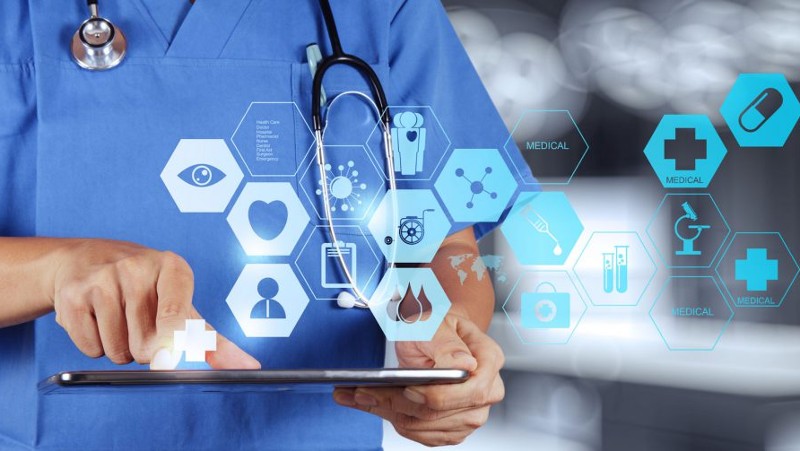
The healthcare industry has been undergoing a digital transformation in recent years, with the introduction of IoT-enabled healthcare solutions. The Internet of Things (IoT) is a network of interconnected devices that collect and exchange data through the internet.
In healthcare, IoT has enabled the development of medical devices and health monitoring devices that can remotely monitor patients and transmit data to healthcare professionals.However, the use of IoT in healthcare also poses a significant risk to the security of Protected Health Information (PHI).
This article will provide an overview of IoT in healthcare and explore how PHI can be secured.
IoT in healthcare refers to the use of interconnected devices, such as medical devices and health monitoring devices, to collect and transmit data for healthcare purposes. IoT-enabled healthcare solutions offer several benefits, including improved patient outcomes, reduced healthcare costs, and increased patient engagement.
IoT-enabled healthcare solutions offer several benefits to both patients and healthcare providers. Medical devices in IoT healthcare can remotely monitor patients and transmit data to healthcare providers, allowing for real-time monitoring of patient health.
This can lead to improved patient outcomes, as healthcare providers can quickly identify and address any issues before they escalate. Remote patient monitoring through IoT can also reduce healthcare costs by reducing the need for in-person visits.
Medical devices in IoT healthcare include a range of devices, such as wearables, implantables, and monitoring devices. These devices collect data on patient health and transmit it to healthcare providers, allowing for real-time monitoring of patient health. Health monitoring devices in IoT healthcare include devices such as blood pressure monitors, glucose monitors, and heart rate monitors.
Remote patient monitoring through IoT allows healthcare providers to remotely monitor patients and collect data on their health. This can include monitoring of vital signs, such as blood pressure and heart rate, as well as monitoring of medication adherence. Remote patient monitoring can help healthcare providers identify issues early and provide timely interventions, leading to improved patient outcomes.
Telemedicine and IoT in healthcare are closely related, as both involve the use of technology to provide remote healthcare services. Telemedicine involves the use of technology, such as video conferencing, to diagnose and treat patients remotely. IoT-enabled healthcare solutions can enhance telemedicine by providing real-time data on patient health, allowing healthcare providers to make more informed decisions.
Data analytics and IoT in healthcare go hand in hand, as IoT-enabled healthcare solutions generate large amounts of data that can be analyzed to improve patient outcomes. Data analytics can be used to identify patterns and trends in patient data, allowing healthcare providers to make more informed decisions. Data analytics can also be used to identify areas for improvement in healthcare processes, leading to improved patient outcomes.
Health monitoring devices in IoT healthcare include a range of devices, such as blood pressure monitors, glucose monitors, and heart rate monitors. These devices collect data on patient health and transmit it to healthcare providers, allowing for real-time monitoring of patient health. Health monitoring devices can help healthcare providers identify issues early and provide timely interventions, leading to improved patient outcomes.
The use of IoT in healthcare poses a significant risk to the security of Protected Health Information (PHI). PHI includes any information that can be used to identify an individual, such as their name, address, and medical history. IoT-enabled healthcare solutions generate large amounts of PHI, which can be vulnerable to cyberattacks.
To secure PHI with IoT in healthcare, healthcare providers must implement robust security measures, such as encryption and access controls. Healthcare providers must also ensure that any third-party vendors that handle PHI are compliant with healthcare regulations, such as HIPAA. Additionally, healthcare providers must ensure that any IoT-enabled healthcare solutions they use are compliant with healthcare regulations.
Artificial Intelligence (AI) has the potential to revolutionize healthcare, and when combined with IoT, it can further enhance the capabilities of healthcare providers. AI can be used to analyze large amounts of patient data, identifying patterns and trends that may not be apparent to healthcare providers. AI can also be used to develop predictive models that can help healthcare providers identify issues early and provide timely interventions.
The implementation of IoT in healthcare is not without its challenges. One of the biggest challenges is ensuring the security of PHI. Healthcare providers must implement robust security measures to protect PHI from cyberattacks. Additionally, healthcare providers must ensure that any third-party vendors that handle PHI are compliant with healthcare regulations.
Another challenge is the interoperability of IoT-enabled healthcare solutions. Healthcare providers must ensure that different IoT-enabled healthcare solutions can communicate with each other, allowing for seamless data exchange. This can be challenging, as different solutions may use different communication protocols.
The future of IoT in healthcare is bright, with the market expected to grow rapidly in the coming years. IoT-enabled healthcare solutions have the potential to revolutionize healthcare, improving patient outcomes and reducing healthcare costs.
However, healthcare providers must ensure that any IoT-enabled healthcare solutions they use are compliant with healthcare regulations and implement robust security measures to protect PHI.
IoT in healthcare has the potential to revolutionize healthcare, improving patient outcomes and reducing healthcare costs. However, the use of IoT in healthcare also poses a significant risk to the security of PHI. Healthcare providers must implement robust security measures to protect PHI from cyberattacks and ensure that any third-party vendors that handle PHI are compliant with healthcare regulations.
The future of IoT in healthcare is bright, with the market expected to grow rapidly in the coming years. Healthcare providers must ensure that they are prepared to implement IoT-enabled healthcare solutions that are compliant with healthcare regulations and implement robust security measures to protect PHI.
The Global Internet of Things in Healthcare Market size is expected to reach $606.7 billion by 2028, rising at a market growth of 16.5% CAGR during the forecast period.